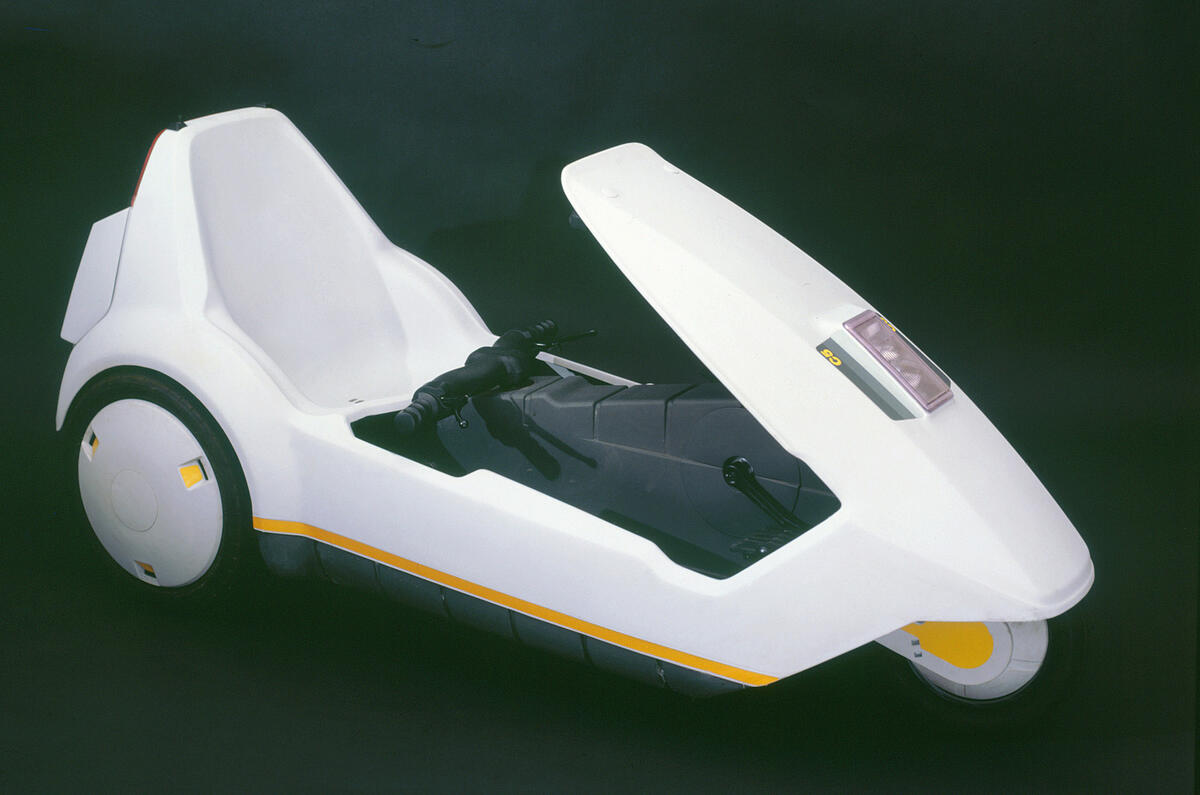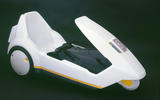Sir Clive Sinclair, courageous inventor of the pocket calculator and home computer who has just died, is best remembered in the car business for one of his more spectacular failures, the Sinclair C5 pedal-electric tricycle.
I was around when the C5 was launched in January 1985, and apart from the singular experience of actually driving the vehicle (which I tried half a dozen times and found rather appealing) I remember two outstanding things — the ineptness of the Sinclair C5’s launch, rapidly followed its ferocious dismissal by a succession of sneering BBC TV reporters, who queued up to criticise the C5’s funny looks, meagre performance and the fact that it lacked weather protection (inexplicably, Sinclair chose to launch in January).
However, my most vivid recollection is the eye-level proximity of the massive wheel-nuts on red buses as I took my first test-drive through London, always enjoying the agility and mobility, always inches from disaster.
The actual concept of a part-electric recumbent single-seater made (and makes) a lot of sense. With the right kind of launch it might well have prospered in today’s world, so much more accepting of pedal-electric power and bicycle lanes for such vehicles’ use. But Sinclair’s people botched the launch. They promised us a car. They launched in winter. What popped out was disappointing and nowhere near as capable as the rumour-mill had suggested it would be. It was almost comically simple and small.
But believe it or not, the Sinclair C5 was fun to drive; Lotus was involved in its chassis design. It felt amazingly swift in dense traffic. The handlebars-under-the-thighs steering worked well, the vehicle felt agile and stable, the 15mph top speed seemed plenty (until you noticed now uncomfortably quickly following traffic caught you) and there was even a chip-driven indicator to warn you to start pedalling because the lead-acid battery was getting hot.
The range, billed at 20miles but only half-delivered, still seemed plenty. And the C5 was quite affordable, though you had to pay extra for a horn, turn indicators and a “visibility mast” so Sir Clive could keep the price under £399.
The biggest problem, something that scuppers many a promising product, was that people simply couldn’t see themselves using it, however bold, affordable and innovative. It looked instantly dangerous and, worse, deeply uncool. Potential users saw only potential accidents and the derision of others. Having started in January, C5 production ceased in August. Only 14,000 C5s were made, and more than half were unsold by the end of production. Now a pristine example can fetch £5000. Funny how the world turns.















Join the debate
Add your comment
Could we, would we build a better C5 with today's technology?, surely someone had thought about it.
@tommyf totally agree about this infuriating trend towards people saying 'passed' instead of died. I know that language evolves over time but there's no place for this ridiculous unnecessary American import!
RIP Sir Clive, happy memories of my Sinclair ZX Spectrum.
That low-level seating position made it terrifying to drive on the open road, and the pathetic battery range confirmed its practical uselessness.
Having said that, we bought a dirt-cheap one not too long after launch, and used it for years as a village fete attraction.